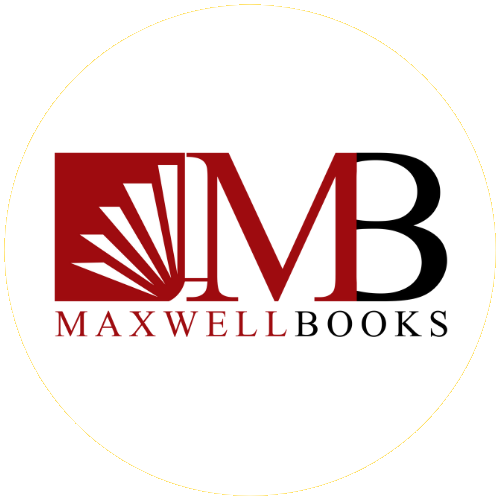Mystery has the undeniable ability to grasp our attention. Unanswered questions, cryptic puzzle pieces, and the unknowns of the horizon are all designed to lure us. Why? Because we are drawn to that which evades our understanding. If you are a storyteller hoping to hook the audience’s attention, then incorporating the mystery method into your narratives serves as a powerful technique for creating intrigue and suspense. When done effectively, mysteries embed stories into the minds of readers, ensuring the tales linger long after the final page.
Leading Readers with The Mystery Method
The pull of a mystery is a fundamentally human phenomenon. As authors such as Micheal Maxwell rightfully understand, the human brain is essentially a question-generating machine, constantly scanning for information gaps. Mysteries tap right into this neurological impulse for closure and comprehension. By posing puzzles, dropping hints, and strategically concealing key details, storytellers lead readers on a quest for answers, compelling them to keep turning pages in hopes of a satisfying resolution.
In storytelling, the mystery method comes in many forms. It manifests in subtle ways, like meaningful references hinting at untold backstories. Or overtly thorough cliffhangers, conspiracies, and shocking plot twists as what Maxwell’s ‘Cole Sage Mystery Series’ applies. From uncertainties shrouding a setting or society to mysterious characters harboring secrets – if written artfully, all mysteries draw us into fictional worlds, igniting our curiosity.
Crafting an Effective Mystery with The Mystery Method
When engineering a mystery into a narrative, execution is key. Rather than randomly confusing an audience for confusion’s sake, an engaging mystery must strike a careful balance. Just as Maxwell emphasizes in his thriller book series, other storytellers must parse out just enough obscure hints to spark curiosity while withholding the right information to sustain intrigue over time.
To pull the mystery method off, writers must orient readers while preserving pivotal uncertainties. Background details, context clues, and character perspectives can frame the central tensions without giving away puzzle solutions prematurely. Descriptions should provide a lens into the story world without erasing its most compelling shadows.
Additionally, effectively incorporating the mystery method means knowing your audience. Consider which narrative gaps will catch their imagination and what resolutions will ultimately satisfy them. Define questions that target their points of curiosity, then carry those threads through the entire arc.
The Power of Revelation
Earning dramatic reveals also factors into great mystery execution. Savvy storytelling trains audiences to constantly glean and analyze, assembling clues toward definitive answers. When crafted well, the mystery method pays off the reader’s investment with dramatic irony, plot twists, and satisfaction of revelation.
The “deferred-effect plot structure” is also an effective technique that many authors apply. This technique puts readers several steps ahead of oblivious characters, allowing audience members to anticipate major revelations before they occur. The delight of realizing truths just before characters underscores the payoffs.
Drawing out mysteries across full narrative arcs before their climactic answers also builds anticipation, heightens stakes, and sustains engagement. Spreading clues and questions throughout chapters grants writers space to develop tension, craft flashbacks, and paint uncertainty in a world where anything seems possible behind the curtain.
Incorporating the Mystery Method
While complex mysteries manifest prominently across suspenseful genres like crime, horror, or science fiction, subtler forms of the unknown could strengthen any story. Captivating stories utilize the mystery method in the slow puzzle-piecing of life lessons.
From ‘Flynt and Steele Mysteries’ and ‘The Logan Connor Thriller Trilogy’ to ‘The Time Pedaler Series, ‘ author Micheal Maxwell easily endears audiences into loyal fans. Even ‘The Max Harmon Mystery Series’ manages to instill the mystery method via complex characters haunted by untold pasts.
In the hands of visionary writers, the incorporation of the mystery method introduces anticipation, intrigue, and pleasurable discovery into almost any narrative formula. Wielded thoughtfully, the allure of the unknown captivates readers across genres, allowing stories to transcend escapism and naturally lodge their way into human consciousness. Our universal longing for answers ensures mystery remains one of fiction’s most reliable tools for spellbinding engagement.
The Secrets of Compelling Storytelling
By incorporating the mystery method into storytelling, you are not just keeping the audience guessing; you are tapping into the fundamental elements that make narratives compelling and memorable. Ultimately, when storytellers harness the power of mystery, they are able to capture audiences, engage their curiosity, and evoke powerful emotional responses long after the end of the story is over.
Avid readers would agree that there is nothing like the thrill of pursuing a mystery to the satisfaction of solving it. The journey of unraveling a mystery is an experience that transcends genres and platforms. The mystery method remains an indispensable tool for crafting stories that leave a lasting impression on audiences, regardless of whether they are classic whodunits or contemporary thrillers.
Michael Maxwell’s writing demonstrates his comprehensive understanding of the human condition, particularly in his ability to spark curiosity in his readers. By carefully incorporating mystery into the narrative, writers elevate the story’s appeal to a profound level. It is true that once a story captures us with its masterful mystery, it becomes impossible to let go of it. It’s amazing how timeless tales reverberate through imaginations like eternal enigmas.
Last but Not Least
If you are interested in learning more about why incorporating the mystery method is important for engaging storytelling, there is no better way to do so than learning from the best.
Micheal Maxwell is an Amazon bestselling author and modern-day nomad who has traveled to over fifty countries in search of exceptional stories and compelling characters. Renowned for his character-driven storytelling and unexpected twists, Maxwell’s books delve into the shadowy worlds of secret organizations and crime investigations, all while standing up for justice.
His thriller book series collection includes:
Cole Sage Mystery Series
The Adam Dupree Quadrilogy
The Logan Connor Thriller Trilogy
Flynt and Steele Mysteries
The Time Pedaler Series
The Max Harmon Mystery Series
You can also visit the author’s website today!

